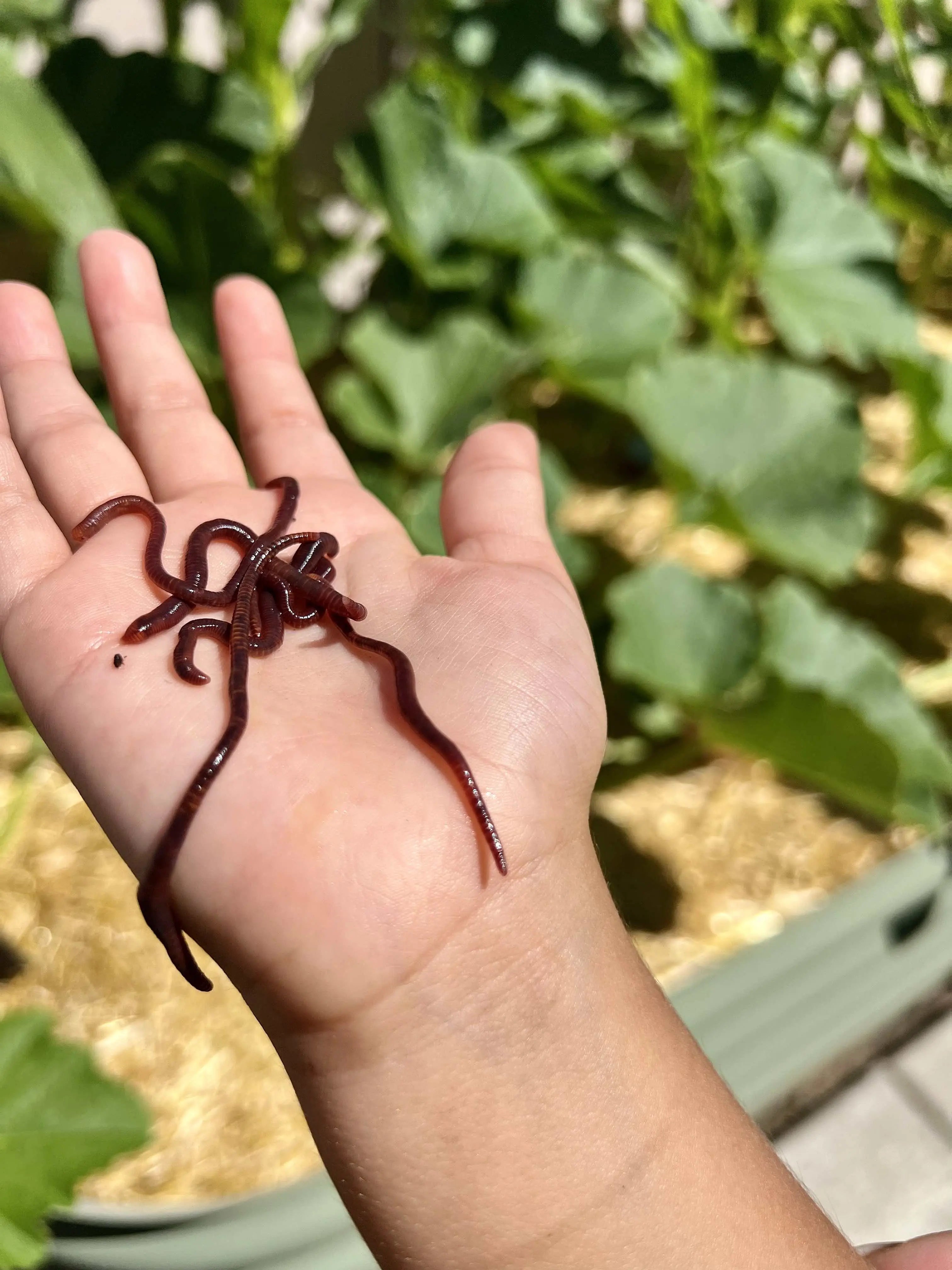Red Wiggler Worms Demystified: Unlocking the Keys of Vermiculture for Greener Living and Nutrient-Rich Soil
In the world of lasting practices for enhancing dirt high quality and advertising eco-conscious living, red wiggler worms play a crucial yet typically forgotten role. These modest animals possess the exceptional capability to transform natural waste right into nutrient-rich castings that serve as a potent all-natural plant food. By diving right into the world of vermiculture, one can uncover a variety of advantages that extend far beyond conventional composting methods. Recognizing the ins and outs of looking after these worms, optimizing their setting, and utilizing their spreadings can cause a greener way of living and much healthier dirt for plants to flourish.
The Function of Red Wiggler Worms
Red Wiggler worms play an important role in composting systems by successfully damaging down raw material into nutrient-rich spreadings. These starved eaters consume a selection of natural materials, such as kitchen scraps, lawn waste, and paper items. As they feed, the worms' digestive system procedures break down the raw material into a penalty, dark, and nutrient-dense material known as worm spreadings or vermicompost.
The castings created by Red Wiggler worms are extremely useful for soil wellness and plant growth. They are abundant in crucial nutrients like potassium, nitrogen, and phosphorus, which are crucial for sustaining healthy plant growth. Furthermore, worm castings have useful microbes and enzymes that assist boost soil framework, boost water retention, and boost nutrient uptake by plants.
Benefits of Vermicomposting

Additionally, vermicompost, the nutrient-rich output of vermicomposting, serves as an outstanding organic fertilizer and soil conditioner. It boosts soil structure, boosts soil oygenation, and raises soil moisture retention. These residential or commercial properties add to much healthier plants with stronger origin systems and far better resistance to insects and conditions. Vermicompost likewise improves the soil with important nutrients like nitrogen, potassium, and phosphorus, promoting plant development and overall dirt fertility.
Furthermore, vermicomposting assistances sustainable gardening methods by giving a all-natural and chemical-free alternative to synthetic plant foods. Red Wiggler Worms. This eco friendly strategy not only enhances the dirt yet also helps minimize dependence on hazardous chemicals, promoting a greener and a lot more lasting means of gardening
Setting Up a Worm Bin
When developing a worm container for vermicomposting, correct arrangement is essential to make certain the success of the composting procedure. The first step in establishing a worm bin is choosing an ideal container. This can be a plastic container or wood box that gives sufficient room for the worms to relocate about and has correct water drainage openings to stop waterlogging. Next off, a bed linens product such as shredded paper, cardboard, or coconut coir must be included to the container. This bedding gives a comfy setting for the worms and aids maintain moisture levels.
After including the bed linens, present the red wiggler worms to the bin. It is recommended to begin with a tiny number of worms and slowly raise as they multiply. The worms should after that be supplied with food scraps such as fruit and vegetable peels, coffee premises, and official statement eggshells. It is necessary to prevent adding meat, milk, oily, or salted foods to avoid attracting parasites and creating undesirable odors.
On a regular basis keep an eye on the moisture degrees and temperature in the worm container to guarantee optimal problems for the worms. With proper configuration and maintenance, the worm bin will effectively transform organic waste right into nutrient-rich garden compost for your plants and garden.
Collecting Worm Spreadings
To effectively collect nutrient-rich worm castings from your vermicomposting system, a methodical harvesting technique is crucial. When it comes time to harvest the worm castings, there are a few essential steps to follow to make sure an effective procedure.

Troubleshooting Common Issues
Identifying and attending to typical obstacles that might emerge throughout the vermicomposting procedure is critical for keeping a productive and healthy worm container. Adding excess food scraps can lead to an accumulation of wetness and level of acidity in the worm bin, potentially damaging the worms. An additional concern is undesirable smells originating from the worm container.
Furthermore, if the worm populace is decreasing or the worms show up undesirable, it might be because of environmental stressors such as severe temperatures or pH degrees. Monitoring these factors and making necessary changes is essential for the well-being of the worms. By repairing these usual problems quickly, vermicomposters can ensure a effective and smooth vermicomposting procedure while maintaining a flourishing worm populace.

Verdict
To conclude, red wiggler worms play a critical role in vermiculture by breaking down raw material right into nutrient-rich dirt. The advantages of vermiculture consist of greener living and improved soil quality. Establishing up a worm bin is necessary for successful vermiculture, and harvesting worm castings offers beneficial garden compost for horticulture. By understanding and troubleshooting typical problems, individuals can unlock the tricks of vermiculture for sustainable living and healthier soil.
As they feed, the worms' digestive processes damage down the natural issue into a fine, dark, and nutrient-dense material known as worm castings or vermicompost.
The spreadings generated by Red Wiggler worms are very valuable find this for dirt wellness and plant development. Including excess food scraps can lead to a build-up of wetness and acidity in the worm bin, possibly harming the worms.Additionally, if the worm populace is decreasing or the Learn More worms appear unhealthy, it can be due to environmental stressors such as severe temperature levels or pH levels. Setting up a worm container is necessary for successful vermiculture, and harvesting worm spreadings offers beneficial garden compost for gardening.